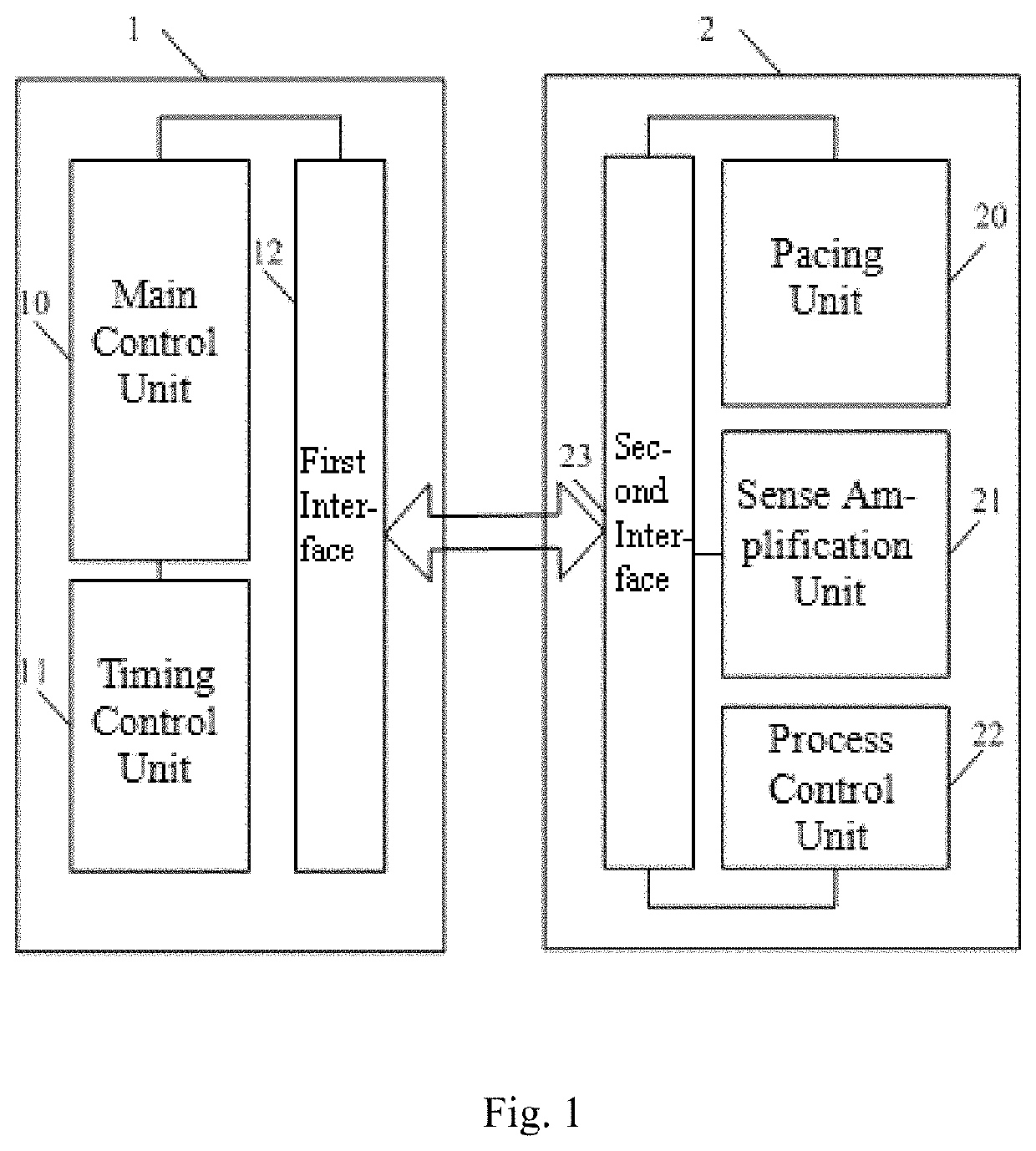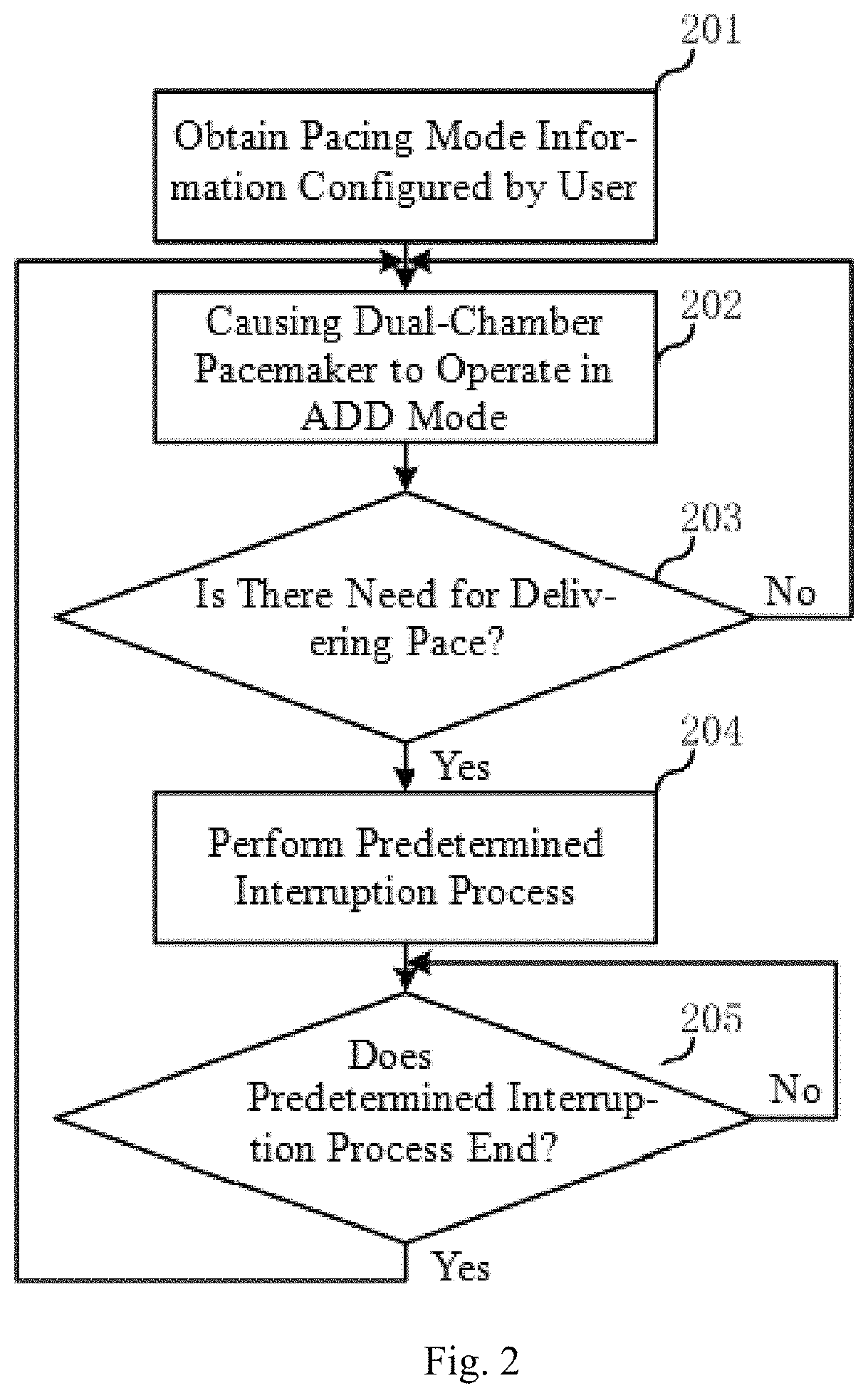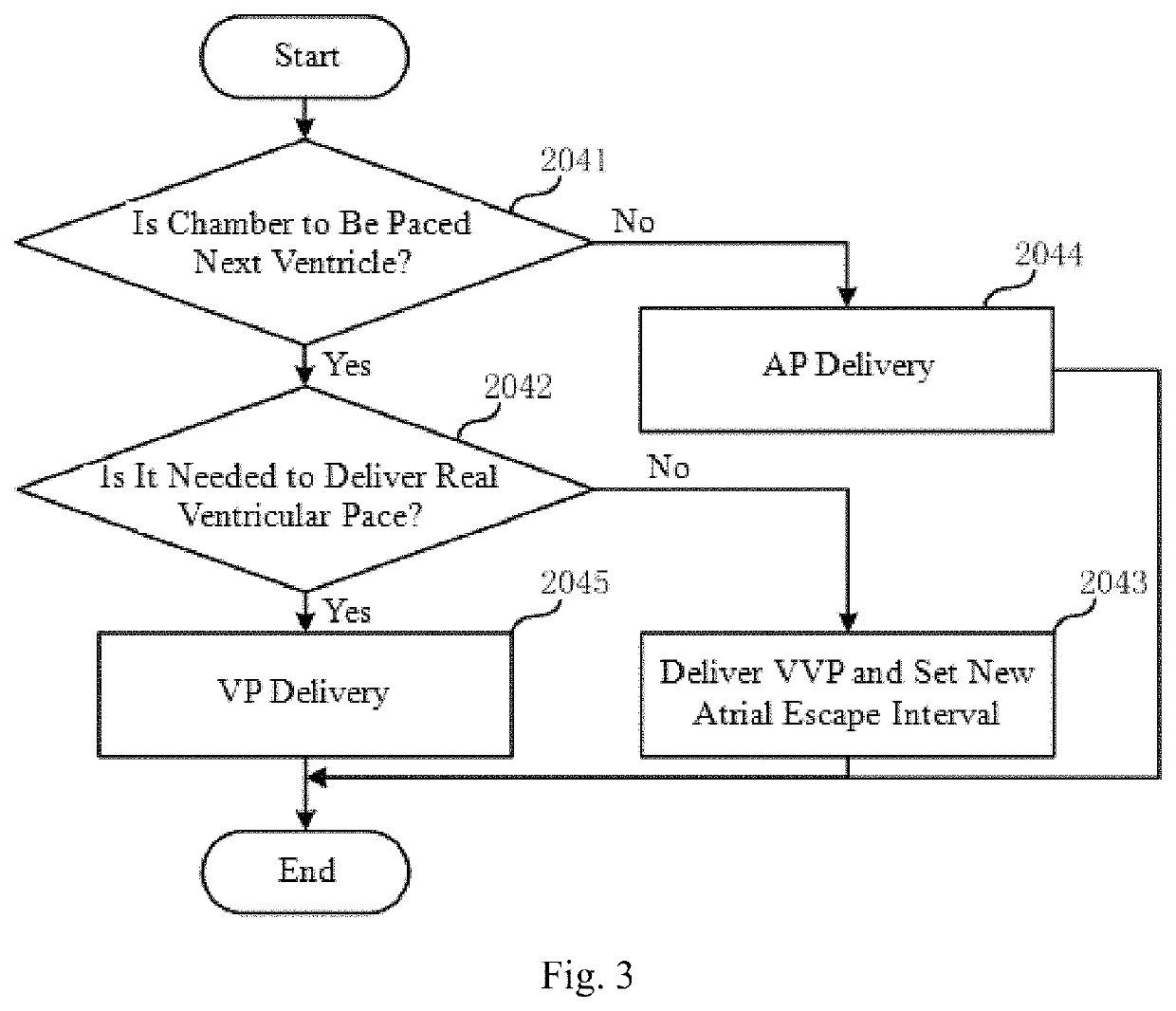Method and medical device for implementing dual-chamber pacing mode without ventricular pacing
a dual-chamber pacemaker and ventricular pacing technology, applied in the field of dual-chamber pacemaker control, can solve the problems of lack of flexibility in handling ventricular events, non-physiological changes in timing, and at least problematic prior art, so as to reduce patient discomfort, minimize ventricular pacing, and facilitate physiological transition
- Summary
- Abstract
- Description
- Claims
- Application Information
AI Technical Summary
Benefits of technology
Problems solved by technology
Method used
Image
Examples
first embodiment
[0024]the present invention relates to a method for implementing a dual-chamber pacing mode without ventricular pacing. The method includes: controlling a dual-chamber pacemaker to operate in an ADD mode and detecting whether there is a need for delivering a pace. If there is such a need for delivering a pace, a predetermined interruption process is carried out, which includes determining, based on a pacing mode indicated by a user input, whether a chamber to be subsequently paced is a ventricle. If so, it is determined whether there is a need for delivering a real ventricular pace. If the delivery of a real ventricular pace is not needed, then a virtual ventricular pace (VVP) is delivered, followed by the beginning of a new first atrial escape interval (AEI) of the ADD mode. At the end of the predetermined interruption process, control loops back to the step of controlling the dual-chamber pacemaker to operate in the ADD mode and detecting whether there is a need for delivering a p...
case 1
[0045] If no heart event is sensed throughout the interval eff_pavi, then a need is determined to deliver a pace. At this point, the predetermined interruption process, i.e., step 204), is carried out. Specifically, as shown in FIG. 4, when the dual-chamber pacemaker does not detect any heart event, an atrial pace Ap{circle around (1)} is delivered, marking the simultaneous beginning of the interval eff_pavi, the AB and VB periods and the ARP. If no heart event is detected within the whole interval eff_pavi, a virtual ventricular pacing Vp0{circle around (2)}(which does not actually pace the heart) is delivered at the end of eff_pavi, and the time when Vp0{circle around (2)} is generated is recorded, followed by a first atrial escape interval (AEI) beginning at Vp0{circle around (2)}. The first AEI is equal to a lower rate interval (LRI) minus eff_pavi, and there is no any other interval initiated simultaneously with the first AEI. If there is no sensing event occurring throughout t...
case 2
[0046] After the delivery of the atrial pace Ap{circle around (1)}, if a first atrial sensing signal Ar is detected both in the intervals eff_pavi and ARP, then another AB period of the ADD mode is initiated. Specifically, referring to FIG. 5, if an atrial sensing signal Ar{circle around (2)} (i.e., the first atrial sensing signal) is detected within both the intervals eff_pavi and ARP, it is determined that an atrial sensing event has occurred in the atrial refractory period. At this point, another AB period, i.e., a new AB period, is initiated at the detection time of Ar{circle around (2)}, and a virtual ventricular pacing Vp0{circle around (3)}(which does not actually pace the heart) is delivered at the end of the interval eff_pavi, and a first AEI (=LRI-eff_pavi) beginning at Vp0{circle around (3)} is initiated without any other interval starting at the same time. If there is no sensing event occurring throughout the first AEI, another atrial pace Ap{circle around (4)} is delive...
PUM
 Login to View More
Login to View More Abstract
Description
Claims
Application Information
 Login to View More
Login to View More - R&D
- Intellectual Property
- Life Sciences
- Materials
- Tech Scout
- Unparalleled Data Quality
- Higher Quality Content
- 60% Fewer Hallucinations
Browse by: Latest US Patents, China's latest patents, Technical Efficacy Thesaurus, Application Domain, Technology Topic, Popular Technical Reports.
© 2025 PatSnap. All rights reserved.Legal|Privacy policy|Modern Slavery Act Transparency Statement|Sitemap|About US| Contact US: help@patsnap.com



